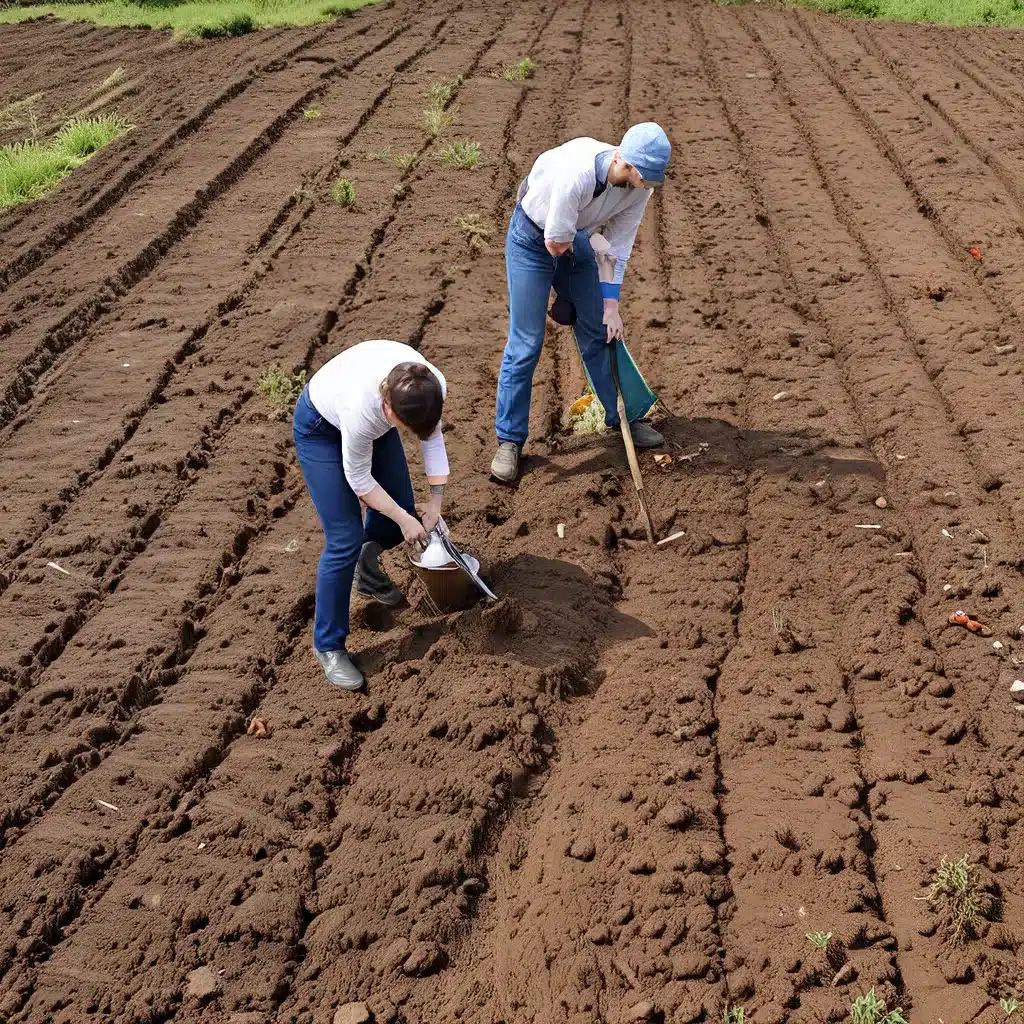
Soil Decontamination Diaries: Reclaiming Polluted Land for a Greener Future
Ah, the great outdoors – where nature flourishes, birds chirp, and the air is crisp and clean. Or is it? Unfortunately, our industrialized world has led to an accumulation of heavy metals and other pollutants in our soil, threatening the delicate balance of our ecosystems. But fear not, my friends, for there is hope on the horizon! In today’s Soil Decontamination Diaries, we’ll dive deep into the fascinating world of phytoremediation – the use of plants to clean up contaminated land. Get ready to be amazed as we uncover the cutting-edge techniques and strategies being employed to reclaim our polluted environments for a greener, healthier future.
The Heavy Burden of Heavy Metals
Let’s start by addressing the elephant in the room – or should I say, the heavy metals in the soil. These pesky elements, such as lead, cadmium, and mercury, have infiltrated our environment through various human activities, from industrial processes to agricultural practices. As we’ve learned, heavy metal accumulation in soil has skyrocketed, and the worst part is, they don’t just go away. These toxic substances are non-biodegradable, meaning they persist in the environment, posing a serious threat to both human health and the delicate balance of our ecosystems.
Imagine a world where vegetables grown in contaminated soil end up on our plates, passing these heavy metals up the food chain. It’s a concerning thought, isn’t it? But fear not, my friends, for there are dedicated individuals and teams working tirelessly to find solutions to this pressing problem.
The Rise of Phytoremediation
Enter the world of phytoremediation – a revolutionary approach to cleaning up polluted land that harnesses the power of plants. These green champions have the incredible ability to absorb, accumulate, and even transform heavy metals, effectively removing them from the soil and preventing them from spreading further. Imagine a field of sunflowers or a forest of willows, not just adding beauty to the landscape, but actively working to purify the earth beneath them. It’s a truly remarkable concept.
But what makes phytoremediation so special? For starters, it’s an eco-friendly approach that’s both cost-effective and sustainable. Unlike traditional methods that often involve expensive and environmentally-damaging processes, phytoremediation relies on the natural abilities of plants to do the heavy lifting. Plus, it has the added benefit of revitalizing the soil, improving its fertility and structure, and creating a more hospitable environment for future plant growth.
The Search for Superhero Plants
Of course, not all plants are created equal when it comes to phytoremediation. Researchers have been on the hunt for the real-life equivalents of Marvel’s Poison Ivy, searching for the ultimate heavy metal-absorbing plant species. These so-called “hyperaccumulators” are the superstars of the plant world, capable of amassing staggering amounts of toxic elements in their aboveground biomass without succumbing to the poisonous effects themselves.
Imagine a plant that can soak up lead, cadmium, or even mercury like a sponge, concentrating these pollutants in its leaves and stems rather than allowing them to seep into the surrounding soil. These incredible organisms are the Holy Grail of phytoremediation, and scientists have been hard at work identifying and studying them, hoping to unlock their full potential.
But the search doesn’t end there. Even if a plant can’t quite reach the lofty heights of a hyperaccumulator, that doesn’t mean it’s not a valuable player in the game of soil decontamination. High-biomass producers, like sunflowers and switchgrass, may not be able to match the heavy metal-hoarding abilities of their more specialized counterparts, but they can still make a significant impact thanks to their sheer size and growth rate.
Enhancing Plant Performance
Of course, as with any endeavor, there’s always room for improvement. That’s why researchers are exploring various strategies to boost the effectiveness of phytoremediation even further. From genetic engineering to the strategic use of soil amendments, the possibilities are endless.
Imagine a team of scientists taking a hyperaccumulator plant and imbuing it with the growth and productivity of a high-biomass species. Or picture a hardy, fast-growing plant that’s been genetically modified to tolerate and accumulate even higher levels of heavy metals. With the right combination of techniques, the potential for phytoremediation is truly limitless.
And let’s not forget the unsung heroes of the rhizosphere – the microbial communities that live in the soil surrounding plant roots. These tiny microbes can work in tandem with their plant partners, enhancing nutrient uptake, promoting growth, and even mobilizing heavy metals to make them more accessible for absorption. It’s a symbiotic relationship that holds the key to unlocking the full potential of phytoremediation.
A Greener Future on the Horizon
As we’ve seen, the field of phytoremediation is brimming with excitement and promise. By harnessing the power of plants, we have the opportunity to reclaim our polluted landscapes, transforming them into vibrant, thriving ecosystems that are safe for both humans and wildlife.
So, the next time you step outside and breathe in the fresh air, take a moment to appreciate the hard work being done to keep our planet healthy and green. From the tireless researchers pushing the boundaries of what’s possible to the unsung plant heroes working tirelessly to purify the soil, the future of our environment is in good hands.
And who knows, maybe one day you’ll be strolling through a lush, verdant park, marveling at the beauty of nature’s own pollution-fighting superstars. It’s a future worth fighting for, and with the innovative approaches of phytoremediation, we’re well on our way to making it a reality.
Remember, Inland Waters Inc. is here to help you navigate the complexities of environmental remediation and water treatment. So, let’s work together to create a greener, healthier world – one plant at a time.


